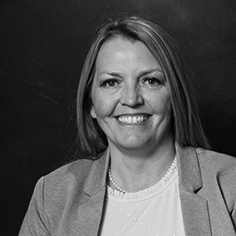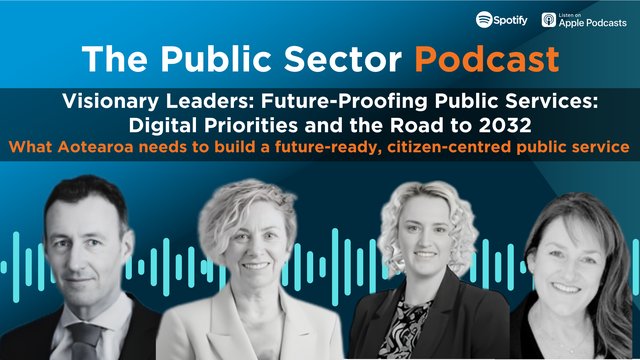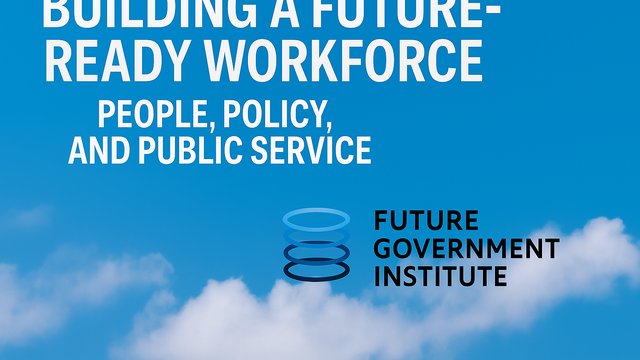The Future of Learning and Development
Learning reimagined in the Public Sector
Spotlight Sessions: Strengthening workforce capabilities to thrive in the digital age

Geneviève Béland
Director, HR Programs and Development
Office of the Superintendent of Financial Institutions (OSFI)

Rhonda McGinnis
Director, Corporate Learning and Sector Research
BC Public Service: Ministry of Children and Family Development (MCFD)

Learning and development: some context
Learning and development (L&D) are the foundations of any organization. They drive knowledge and encourage continuous improvement. Some organizations spend significant time and resources building up their L&D, whilst others let it slide, and it is usually clear which ones have made the investment.
Two Canadian public sector organizations have recently realized that L&D should be more prevalent than it was, partly as a result of the pandemic, and have taken important strides to change their situations. Geneviève Béland , the Director of HR Programs and Development at the Office of the Superintendent of Financial Institutions (OSFI), says that L&D is about taking “deliberate strategic approaches and investing in employees’ growth, while also meeting organizational objectives now and into the future.” For Rhonda McGinnis , the Director of Corporate Learning and Sector Research at the BC Public Service: Ministry of Children and Family Development (MCFD), their new approach to L&D, inspired by the pandemic, is “actually about teaching people how to learn differently.” In a large public sector institution like theirs, this is going to be a complex process, and “we will need to provide a lot of support.”
A new approach to learning and development
Office of the Superintendent of Financial Institutions
Geneviève Béland says that at OSFI, they’ve “been on a path of renewal since 2017.” The organization itself “was created in 1987” with a mandate “to protect the rights and interests of depositors, policyholders, financial institution creditors and pension plan members, while allowing financial institutions to compete and take reasonable risks.” In other words, they are a regulator. The current workforce is “approximately 860 employees, of which 6% are executive people leaders.” The total number of employees has “almost doubled since the 2008 financial crisis.”
The path to renewal was not a deliberate one. It began as an opportunity to “take stock” and as a check to ensure that “programs, policies, and practices were aligned to support what we wanted to achieve.” From the survey, which was designed to see “how we lead, manage and develop our people,” a strategy was developed with “five pillars of human capital: leadership, talent management, learning and development, culture and community building, and enterprise-wide change management.” By the time the pandemic hit in early 2020, “we were in the last year of our implementation.” It was an initial shock, but “the pandemic propelled us forward and quickened our pace of change.” What started out as an ad-hoc idea became a conscious plan when they realized that as a result of the pandemic, they needed “new skills to operate in this new world, but also needed to have a new approach for developing them.” This meant having “purposeful action and creating the foundation to change mindsets so that we could build our knowledge competencies for this modern digital world.” A new workforce strategy was therefore set up that was underpinned by four deliberative actions:
-
A focus on leadership development
Surveys and implementation “revealed a few important gaps in terms of communication amongst leaders, and showed that they need to be more connected to each other and to the corporate vision, mandate and values of the organization.” To overcome these gaps, since late 2019 a leadership development program (LDP) has been run for executives to “develop the appropriate skill set and apply the various approaches and tools to enhance the performance of their teams.” There are eight sets of cohorts within OSFI and six of them had gone through the program when COVID-19 began. “We, therefore, had to turn on a dime to complete cohort six virtually, and then also designed and delivered the last two cohorts online as well.” Alongside the LDP, a supplementary program for leaders “to build the fundamentals” was also initiated. This program focuses on individual performance as well as “collaboration, agility, transparency, and integrity.” Both programs were about ensuring that the skills and knowledge that leaders need were embedded so that they could do their jobs and empower others. The programs were “well-grounded before the pandemic, therefore we were able to pivot quickly and manage them virtually.”
-
The refresh of our core corporate values
As the pandemic progressed, it became clear that a refresh of the corporate values was also required, which was also part of the new approach and pathway. So in September 2020, the values were updated “with minimal involvement of our executive. Instead, this was developed by our people.” The values, therefore, are “what we believe in, what we stand for, what we expect of each other and they define who we are – essentially one office and one team. So our values now are respect, curiosity, and stewardship.”
Respect and stewardship were reworked from previous values, whilst curiosity was added as a new concept. It was added because “we are always learning. Curiosity is the foundation to create a work environment where it is safe to fail and where innovation and the quest to learn are part of who we are.” This, therefore “increases our capabilities both at an individual and an organizational level.”
-
Building a coaching approach
In line with the leadership and value updates, coaching was another area that required attention because it “helps people to realize their full potential.” Coaching was already part of the offerings of OSFI, but “we offered employees access to coaching services, tools and training to become better coaches themselves. During the pandemic, we increased those offerings and created core peer coaching circles with facilitation for people leaders to develop resiliency and to learn with colleagues.” The pandemic showed that these sessions could be delivered virtually and that they could “build capabilities” of the people involved in significant ways.
-
Maximizing the use of our change management framework
To ensure that all the processes of the L&D program were working and being adopted, OSFI created a change management framework in 2018. The guiding principle is that change management, like L&D, is intended to “shift mindsets and behaviors.” Some people were previously were “unaware or possibly resistant” to the change process, but this is a framework that steps out each of the elements in order, from “aware to knowledgeable, engaged and supportive.” This way, change can be “accepted, adopted, and utilized.” OSFI is a busy and “dynamic environment,” and this framework, therefore, ensures that change happens in a systematic manner with “the people side of the change” also included.
L&D encompasses many elements. To be successful, it needs to be in the constant consciousness of employees. Ultimately, L&D is about “shaping, influencing, building and creating enquiring mind-sets and skill development – core elements to building capability by design.”
BC Ministry of Children and Family Development
Rhonda McGinnis says that training in an employment context is one of the fundamentals of any organization. This is particularly true at MCFD because it is “bigger than most other Ministries,” complex and unique. MCFD has “5,500 employees, about 75% of whom are frontline service delivery staff.” They are spread out across 199 locations throughout BC, and generally have limited technological acumen and a very traditional learning style.” Until it was forced on some of them for instance, remote working was never even contemplated, whilst all learning occurred in classrooms. Beyond what was required by legislation for staff to maintain their credentials, L&D was rarely thought about too, and it was thought about even less for the 25% who are not frontline staff. Partly because of these attributes, about two years ago, “an organizational need and a gap was identified by the Ministry executive team.”

To fill the gap and ensure that L&D was prominent and relevant, a “Strategic Human Resources Branch” was created, with a director, three L&D consultants, and a training administrator. The first step was a “learning needs analysis and a public service audit.” Fortunately, all Ministries in BC have been “running work environment surveys since 2006 that give a snapshot of the state of engagement.” For the purposes of L&D, it took about six months to come up with “four foundational themes” based on the survey:
- A foundation for learning – “Many of our employees were missing basic information regarding the Ministry, how government functions and how their roles aligned with that.”
- Leadership – “There were gaps in leadership competence, a desire for more skills around executive presence, and strategic leadership and alignment.”
- Supervision – “In this organization, there’s quite a clear path from frontline roles to potentially executive director roles, but there are some big gaps in those steps. Some people in the Ministry spend their whole careers here but don’t quite know how to move around because it’s all completely in-house, so there was a gap in supervision.”
- Constraints to learning – “It was disappointing to find out, but actually not surprising, that learning was not really prioritized in this organization.”
With these gaps identified, “a slimmed-down version of the Bersin high-impact learning organization maturity model” was applied. This has four levels of implementation and training, each one designed to show why training is important. In an organization the size of MCFD with so many frontline staff doing important work, taking people out for training needs to be justified and necessary. “You really need to make the case that there’s a real benefit to the children and families when we spend time and resources on our staff around learning.”
From the four foundational themes, a strategy was developed, which also has four continuous elements:
- “Provide appropriate learning with needs-based and evidence-led content which systemically delivers planned learning interventions across the organization.”
- “This leads to aligned and integrated learning across all of the corporate business areas.”
- “The learning then needs to be managed effectively to support continuous learning and knowledge transfer.”
- “And this leads to the creation of a learning organization that demonstrates an executive commitment to learning, which is seen as an investment in the development of employees.”
All four of these are on a continuous cycle, underpinned by “evaluations and metrics, because if you don’t value or share how you’ve done and where you’ve seen some improvement, then it’s really difficult to keep the executive engaged in this.” This was a big change for the organization and a process that was completely new, but it had an “overwhelmingly positive response from the executive,” which made it easier to implement and showed that it was necessary because that energy “trickles down to employees.”
To really ensure that the strategy could be implemented, the new branch also “moved from a competency model to capabilities. Competencies were everywhere, but the problem was that they weren’t consistent.” Competencies were about aspirational objectives, and though they sound good, hiring managers often interpreted them individually and that created challenges.
These capabilities feed directly into the LEAD model of MCFD capabilities: “ L ead self, E ngage others, A lign business, D evelop strategically.” These capabilities apply across the Ministry, but they “are not role-specific.” They are designed to be bespoke to the Ministry but applicable to all roles. “We are currently developing an interactive self-assessment tool for each capability which will allow employees to identify where they need to focus their growth.” This will also develop a “common language and shared understanding of expectations across the organization.”
Although the strategy and all of these changes were developed across the organization, they also resulted in “two complementary programs” to enhance the learning. One is a “12-month, flexible, self-directed professional development series of virtual learning sessions led by subject matter leaders,” whilst the other one is “a more formalized leadership program for prioritized learning cohorts.” Both programs are being offered online, and it will “be very interesting to see how they run and develop because as much as 2020 changed many things, the MCFD has a very traditional learning style and that hasn’t really changed.”
Want more insights like this?
Be sure to join us at the next PSN virtual event:



































